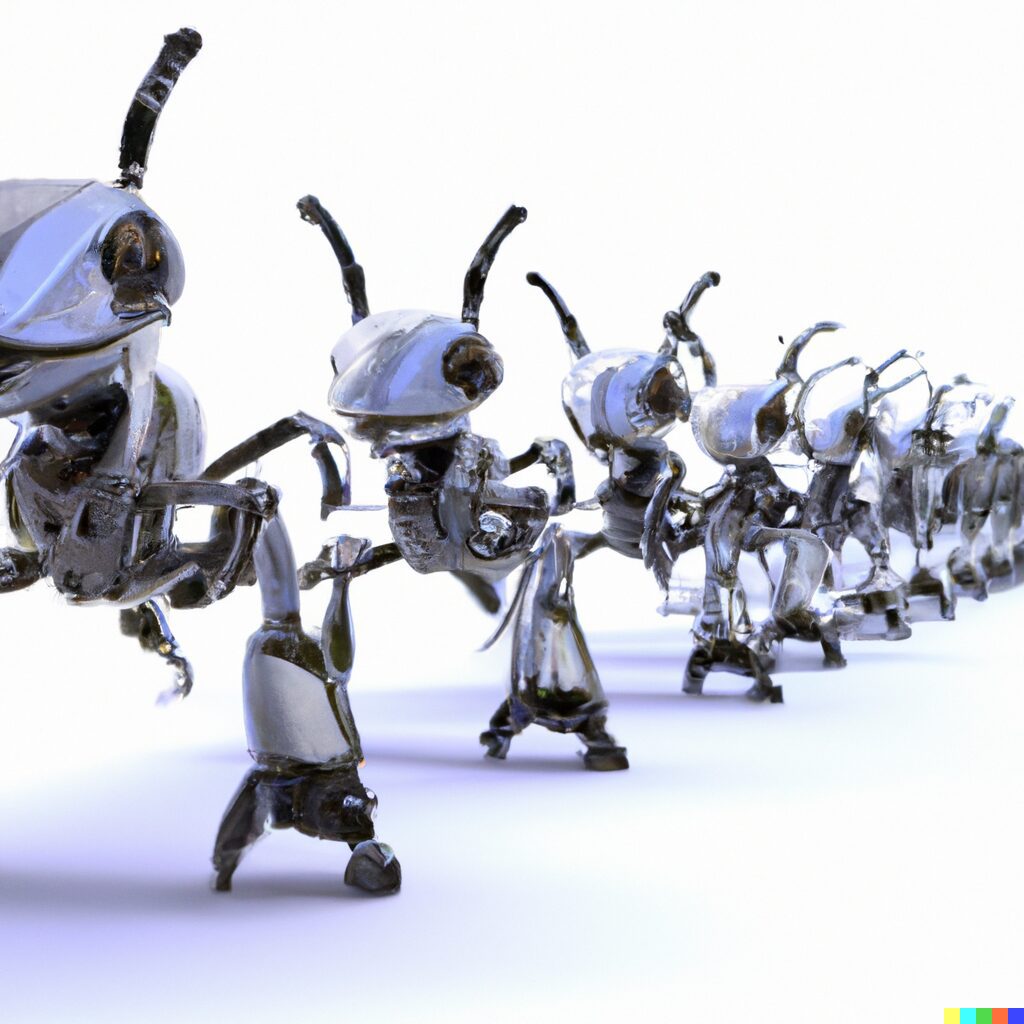Short lesson today on how machine learning works… WAIT! Don’t go!
I know, I know. Learning about machine learning sounds about as exciting as watching the grass grow.
But trust me, you’ll want to stick with this for two reasons…
First, machine learning (ML) is the world we live in now with marketing. Continued success pretty much requires at least a basic understanding of how the machines manipulate things (or, better yet, how you can manipulate the machines!)
Second, you don’t need a Ph.D. (or even a GED) to understand how ML works. All you need to understand is ants.
Yep, ants. The crawly lil’ buggers you don’t pay much attention to unless they’re in your house or running off with your picnic lunch.
Here’s how ants can help you understand ML better than most:
It turns out that ants are fascinating creatures. One of the ways this is so is through their use of pheromones.
When ants travel, they leave behind a pheromone trail. This trail is how they tell their ant friends how to get to a food source.
All ants know if they follow that line of pheromones, they’ll get to the food.
(They are so hardcore about this that they can get caught in a “Death Circle” where they march in a circle until, unable to break free of the pheromone trail, they die. Here’s a short video of this phenomenon.)
For those of you who were curious (devilish?) kiddos, you know this pheromone trail is pretty easy to disrupt.
To mess with the ants, all you need to do is swipe your finger across the trail. This wipes some of those pheromones off in a different direction.
Which confuses the poor buggers.
Because, to the ants, that line of pheromones is a measure of where they need to go. It’s their link to the food source, and when that link is broken, the ants don’t know where to go or what to do.
Machine learning works in a very similar way.
In simple terms, ML blazes a trail to the conversions using all the data that gets fed into it.
From that data (keywords, landing pages, bids, audiences, time, location, etc.), it builds a model of success for a campaign.
Basically, it figures out where the conversions are and then builds a straight line to get there efficiently and consistently.
But, as with ants, you can mess with ML if you break that line.
Making changes to an ML campaign is the equivalent of swiping your finger across an ant pheromone trail.
With ants, if the disruption to their trail is relatively minor, it’s not a big deal. Their straight line may get a little wider. They may wander around a little in order to pick up the trail again. But, ultimately, most of them can still find the food.
Same with minor tweaks to ML campaigns…. the machine *should* still be able to find its way to the conversions.
But if the changes you make are too big, that’s when things can fall apart for ants – and ML.
For an ML campaign, this could involve making major changes to your landing page or too large an increase to your campaign’s target Cost Per Action or Return on Ad Spend.
This is the equivalent of dragging an Andre the Giant-sized finger across the trail ML had built to the conversions. This disruption is so big the machine gets confused, and its model breaks down.
Which can cause your campaign (and even the entire account in some cases) to completely fall apart.
And this, dear reader, is why you have to be so stinkin’ careful when making changes to ML campaigns!
To Google’s credit, things are getting better on this front. Making changes to campaigns is less likely to result in a complete meltdown these days than it was 6 months or a year ago.
However, the ML used by many other Big Tech players is still playing catch up.
For example, I recently had a machine learning campaign in Microsoft Ads fall apart by just raising the budget from $57 to $63 a day. (Which, by the way, was the increase recommended by MS Ads – thanks for that amazing advice Microsoft – grrrrr!)
Anyhoo, here are two tips to leave you with:
1. In general, the more you can keep your big meat hooks off machine learning campaigns, the better.
If you do want to make big changes to campaigns (at least in Google), we recommend using Experiments.
Split each change you want to test into its own Experiment spaced out in 2-week chunks (or something similar).
This will keep the algorithm from freaking out on the campaign that’s working… while letting you see what would likely happen if you applied that change to your entire campaign.
2. If you make changes and your once high-flyin’ campaign turns into a heaping pile of garbage, here’s a suggestion…
Your best bet to “reset” the campaign is by removing machine learning from it.
Yep, go Old School and manage the campaign as free from any ML influences as possible.
Get it back to a point where you’re getting good data, results, an acceptable CPA, etc. Then, once you’ve righted the ship and it’s headed in a good direction, you can turn the ML back on to blaze a new trail to the conversions.
See, learning about ML isn’t so bad!
In fact, an added benefit to this lesson is that if you’re hanging out at a backyard BBQ and you want to impress your friends and family, just tell them about ants and machine learning!
You just might want to have some Raid close by in case any ants try to beat a pheromone trail to the fruit salad.








